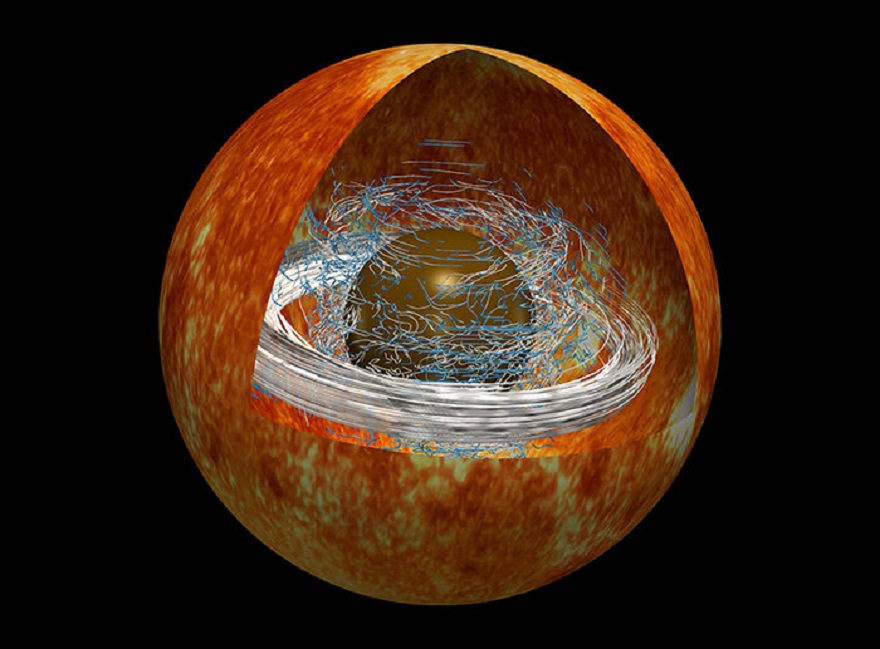In some cases, the cores of stars can contract and, as a result, begin to rotate faster. However, observations show that this is happening more slowly than it should be. Scientists have found an explanation for this.

Cores of stars
Three French scientists from the scientific organizations CNRS, INRIA and ENS-PSL recently published a study in which they explained the processes going on inside some stars. In them, the interaction of plasma and magnetic fields leads to a slowdown in the rotation of the cores according to the calculated values.
Stars are giant balls of incandescent gas. They are held by the counteraction of two forces: gravity, which is related to their elemental composition and pressure, which is not related to it. They also rotate, and the energy of this rotation in most cases remains constant, no matter what happens to the luminary.
When the hydrogen inside the stars “burns out”, it turns into helium or heavier elements, the balance between gravity and pressure is disrupted and the core is contracted. However, the rotational energy remains, so it begins to accelerate.
The only problem is that the oscillatory movements of real stars, their asteroseismology indicate that the cores of the luminaries rotate, although faster than their outer layers, but still slower than they should do according to today’s models. It is this discrepancy that French scientists have tried to explain.
Magnetic fields and plasma flows
In order to explain why the rotation of the core is slowing down, scientists have created numerous models. They indicate that its cause is extremely powerful magnetic fields that form plasma flows in the core. They cover the entire inner space of the luminary.
In addition, turbulence occurs inside magnetic fields, that is, internal local vortices. And it is this turbulence that can enhance the braking effect of the fields and, finally, slow down the rotation of the core.
However, it is not possible to test this theory yet. The fact is that in the same work, the authors show that all these complex fields are effectively hiding from us behind the outer shells of the star. No wonder we don’t know anything about them.
According to phys.org
Follow us on Twitter to get the most interesting space news in time
https://twitter.com/ust_magazine

